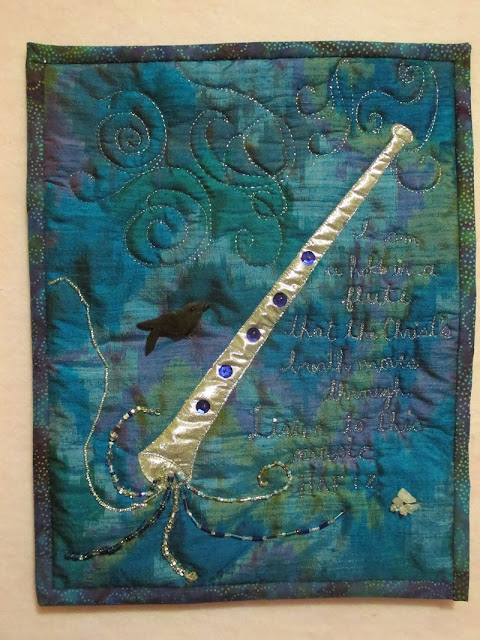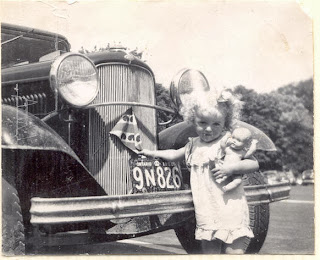Writing last week about “what it’s all about” (the Big Q) reminded me of a few more things, so this is a continuation of last week’s post.
In particular I wanted to share this: I have found the best way to get hints about the answer to the Big Q is to connect with the Divine, or the Creator, or the Higher Power...whatever name you give to God.
Ah, but how do you do that? When I was much younger, I thought, as I’d been taught, that the way was through words. You prayed words, you listened to words, you read words, you sang word-prayers, and somehow, this was supposed to connect you to your Maker. Sometimes it did. More often, it didn’t. Oh, sure, I talked to God all day in my head: “Nice day, today – thanks for that. Oh, and by the way, I’m really worried about X, could you take care of that, please? And I’m feeling blue today ...”) But mostly it was me doing all the talking. I thought maybe I was missing the antenna to hear what God was saying to me. It was supposed to be a two-way relationship, wasn’t it?
Later, I learned, to my relief, that there are many other ways to commune with the Divine. In
Fifty Ways to Pray – Practices from Many Traditions and Times, I learned about meditation, about reflection, about using imagination, about experiencing nature, and about body prayers. All these are prayers that don’t necessarily use words but allow us to listen and engage with God in new ways.
Body Prayers – using our body through dance, drumming, running, walking – especially appealed to me. When I used my body – when I worked with my hands, creating quilts or art pieces or journalling about ideas, or when I took walks alone, or moved to music, I would receive insights and revelations even when I wasn’t necessarily looking for answers. That was a big !AHA! moment for me: when I activated it through movement, the Divine Spark’s energy flowed through me.
That’s a long introduction to a story about a winter walk and a hint of an answer to the Big Q. The story starts in 2004 in Texas, where Al and I were vacationing at Big Bend National Park, right across the Rio Grande River from the village of Boquillas, Mexico. For years, the villagers of Boquillas had supplemented their meager incomes by ferrying park visitors across the river in boats and offering them the food and handicrafts of another culture. This was technically illegal – nobody was checking passports – but officials turned a blind eye to the practice. Then came 9-11, and suddenly the borders were shut down. With armed guards patrolling the watery border, the residents of Boquillas were cut off from a supplementary income that fed and educated their children.

What to do? The Rio Grande was a very shallow river at this point, so while one person remained on the Mexican side as a lookout, others would wade across the Rio Grande and invite walkers on the trail to buy their handicrafts. I was buying a walking stick when a piercing whistle sounded – the lookout had spotted a guard on the other side. The Mexican men grabbed my money, rolled up their handicrafts in a blanket, and rushed back across the river to safety.
Five years later, in Courtenay BC, I grabbed that Boquillas stick to go
walking on a wintry January morning. Down to the woods I went, where
the trails were icy.
 |
| This is a quilt square I made to celebrate the walk. |
The stick was a great support as I navigated the bumps and hazards. I breathed the crisp cold air, felt alive and refreshed. I wasn’t really thinking about much else, but when I got back to my computer, this is what I wrote:
Connections
March, 2004: Big Bend National Park, Texas
On the banks of the Rio Grande
squatting beside their secret wares,
Mexican men:
“Psst! Would you like to buy?
Hand-carved walking sticks,
cheap, Senora, cheap!”
We buy a walking stick.
Then comes a warning whistle:
the men pack their wares,
dash across the river,
to home and safety,
ahead of the gun-toting border guard.
$10 has bought them security:
their children will have food for another day.
January, 2009:
On the banks of the Puntledge River,
on icy Vancouver Island,
I pick my way along the path,
into the rain-spattered wind,
leaning hard upon my walking stick.
Eagles, fungi, roaring river
replenish and refresh.
$10 has bought me security, and
my spirit has been nourished for another day.
The
tiny inkling of awareness on my walk was in the connections I
experienced: the connection between terrorists and innocent citizens in a
far off country; a connection to nature; a connection to strangers who,
like me, were looking for safety and security; and a connection to the
Creator.
Our very big world is so very small, and in the grand
scheme of things, not very much separates us from each other. Drawing
strength from the Creator of it all, we can take care of one another and
the world we live in ... or not. Whatever we choose will have
consequences.
It’s not the whole answer to the Big Q, but it’s part of it, I’m sure.
















































